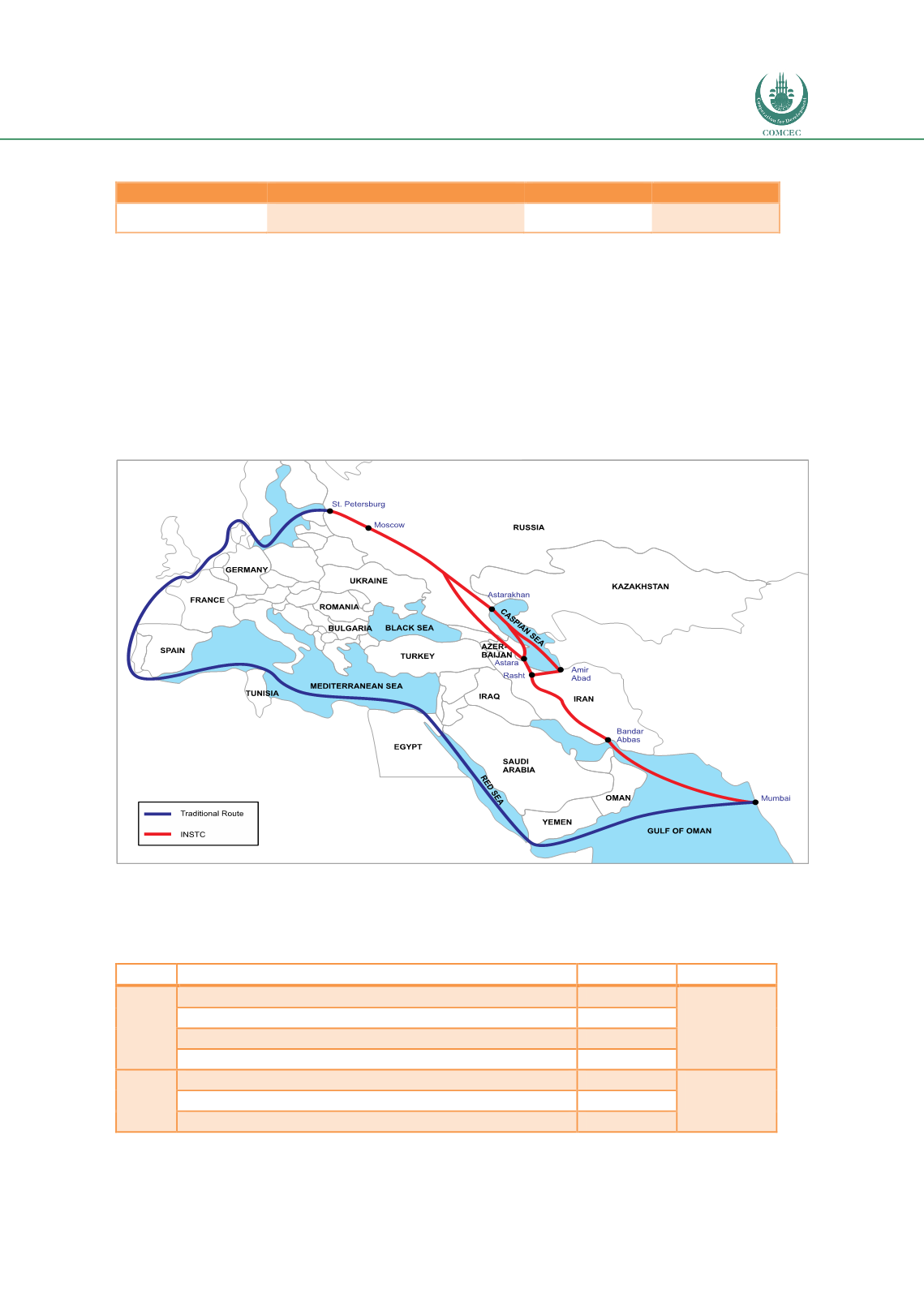

Improving Transnational Transport Corridors
In the OIC Member Countries: Concepts and Cases
153
Table 50: Corridor profile INSTC
Location
Countries covered
Length (km)
Secretariat
Russia, Iran, India
Russia,
Azerbaijan, Iran,
India
7,200
Tehran, Iran
Note: Countries in bold are OIC Member Countries
The trade value between India and Europe is more than 70 billion Euros per year (Najafi,
2017). In terms of value, the potential trade volume on this corridor is nearly 10 million tons
per year, of which 8.3 million is between India and Russia (Ashrafi, 2017).
The traditional route of the freight transport between India and Russia is a long sea route from
the East Sea via the North Sea, the Mediterranean Sea, the Suez Channel to the Red Sea, the Gulf
of Aden and finally crossing the Arabic Sea.
Figure 55: Traditional vs. INSTC corridors
Source: INSTC Secretariat, adjusted by Fimotions.
INSTC offers a shorter route between India and Russia with the following options:
Table 51: INSTC routes
Route Sub route
Mode
Distance
1
Mumbai (India) – Bandar Abbas (Iran)
Sea
1,265 nm +
1,900 km +
2,600 km
Bandar Abbas – Rasht (Iran)
Rail/road
Rasht – Astara (Iran)
Road
Astara (Iran) – Moscow (Russia)
Rail/road
2
Mumbai – Bandar Abbas
Sea
2,265 nm +
1,500 km
Bandar Abbas – Amir Abad/Bandar-e-Anzali (Iran)
Rail/road
Amir Abad/Bandar-e-Anzali – Astarakhan (Russia)
Sea
Source: Fimotions (2017), from various sources.
















